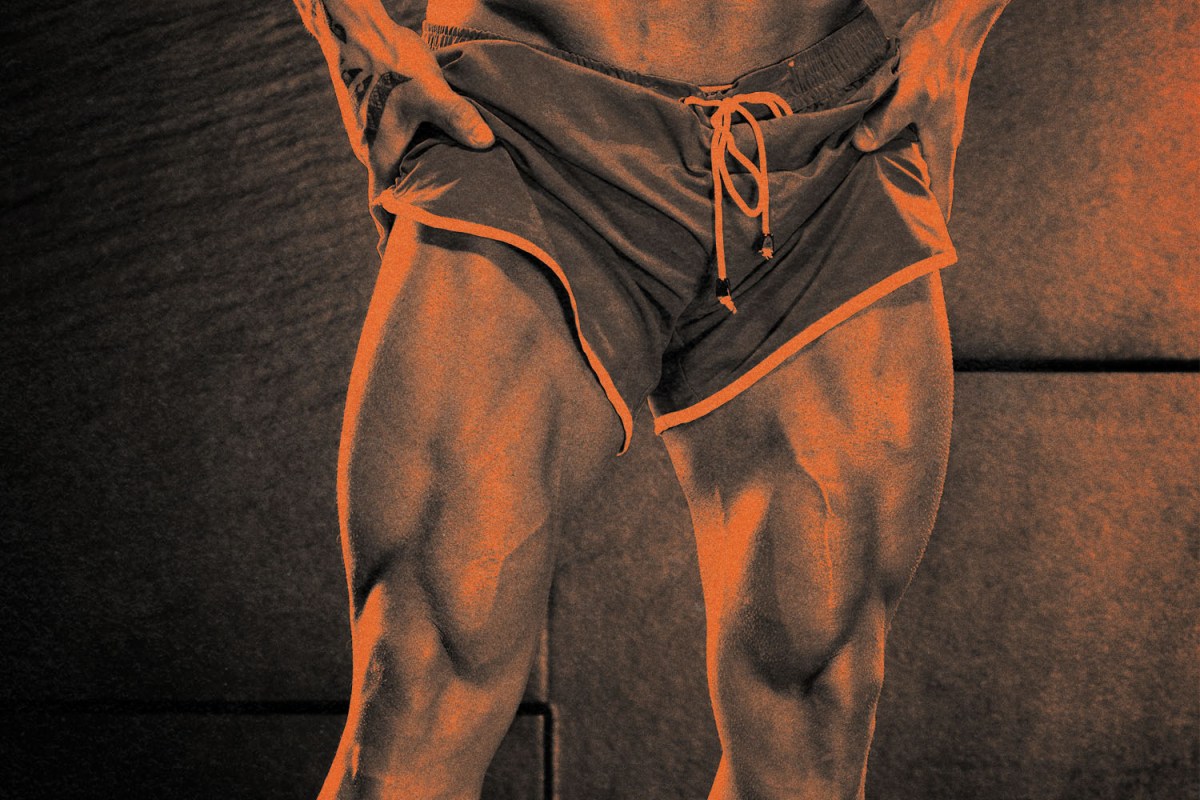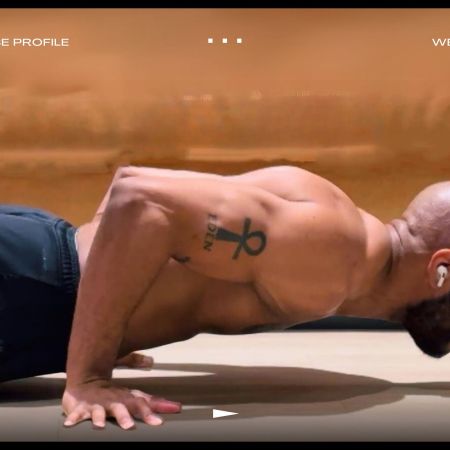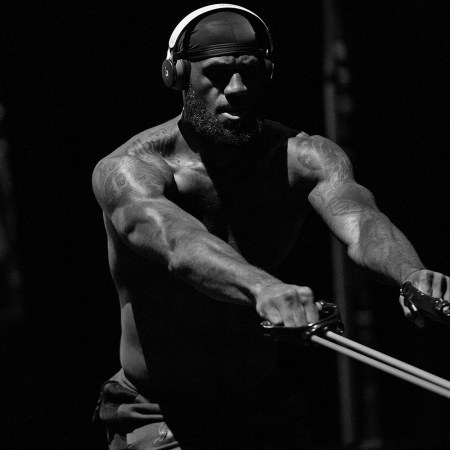At some point this year — probably June or July, according to most state legislators — coronavirus restrictions will ease and we will all re-emerge, like bears from their slumber, into polite society. To help you readjust, we’ll be sharing some advice on grooming, fitness, getting dressed in something besides sweatpants (but also sweatpants), how to manage your stress and mental health, dating, concert and bar etiquette, and more.
Last month, we published a thirsty paean to a summer of potentially dangerously short short-shorts inspired by the post-gym fit of one Milo Ventimiglia. The This Is Us star was recently captured somewhere in LA wearing a pair of three-inchers, which did nothing to hide the family-sized turkeys sitting where his thighs ought to be. Predictably, the photo poured some gas on a movement that TikTok started to pioneer last summer. The top-liked comment on GQ‘s Instagram simply reads: “more! thigh!”
The world wants to see you show some more lower-half skin, stat. And you know what? The world deserves it. Last summer was a wash, and we’re all sick of seeing our neighbors in grey sweatpants at the grocery store. Of course, this new paradigm begs the question: What if you’re not feeling ready to let your thighs fly? What can you do now — and throughout the summer — to get them in in beach (or parking garage) shape?
Keep in mind that supersized trunks aren’t a must-have virtue. You can be in excellent shape without them, you’re allowed to feel good about yourself without them, your “hot vax summer” will be intact without them, and it’s possible, despite your best efforts, that genetics stand in the way of you ever really getting them.
But at the same time, wearing short shorts is a blast, and it’s nice to have a wacky fitness dream heading into this summer. Anything to keep workouts fresh and fun. To that end, here’s a brief, handy guide to getting bigger thighs. We’ll see those hams on the other side.
What’s in a thigh?
Quick anatomy lesson: the thigh is made up of the quadriceps (at the front, which is comprised of four distinct parts), the hamstring (at the back) and the adductor muscles (located at the interior). These muscles are all responsible for different things: the quads supply strength and stability, the hamstrings function as a “motor” for propelling the body forward (that’s why they’re so susceptible to injury in sports) and the adductors support healthy alignment, helping the legs rotate internally, which provides more power to your legs. Despite those varying assignments, though, the muscles tend to work together. Giving them all their due can only help you in your quest for bigger thighs.
Full-body fitness
To that point: as we covered recently in our call to arms for more “sustainable” beach-body fitness (i.e., building bodies with thoughtful, full-body moves, not just isolating specific muscles to death), it’s crucial to approach any body part from multiple angles. Recruiting other muscles in the region, or throughout the body at large, will open up a world of new workout opportunities, while ensuring the strain on one muscle doesn’t stray towards injury. This might sound intimidating, but it’s actually a good, simple thing. Mentally, it can be a nice entry point to know that you can jumpstart your thigh training by working the area via an array of activities outside of the gym. Think: strides around the track or on the turf (limit them to 200 meters or less), hill workouts, stair sprints, high-stepping in pools or ocean shallows, and all sorts of jumping exercises, from jumping jacks to box jumps to jump-roping. Rotate the above accordingly to make sure you never get bored, and don’t be surprised if you get larger calves, a tighter core or a more upright posture as a natural byproduct. That’s a victory, no matter what the original endgame was.
Squats, squats, squats
That said, if you don’t power-lift the muscles in your thighs, you’re probably not going to find the Ventimiglian results you’re looking for. There’s a reason people hover over the ever-popular racks at the gym for a chance to get some squats in. Bigger thighs start with bigger quads, and barbell squats, both back and front, help build power in the legs and back. Back squats mainly work the posterior of the body (hips, glutes, lower back), while front squats work the anterior (quads, upper back). To earn some killer quads, you’ll want to master front squats. It will definitely take some time — they require more mobility than back squats. Squatting is also just tricky in general; it can mess with the back when done incorrectly; to generate safe, reliable power, remember to stand shoulder-width stance with your feet turned slightly outward. It’s definitely worth starting slow. Begin with weightless air squats, then start doing goblets (where you hold a kettlebell in front of your chest, elbows out), and once you’re lifting the weighted barbell, focus on form first, not weight. Once you’re comfortable, start a progressive loading program, where you’re lifting to failure each time you hit the gym.
The bit players
Other leg muscles, especially the glutes and calves, will naturally be recruited anytime you lift legs. We recommend getting dumbbells involved, in order to perform dumbbell split squats, dumbbell stiff-leg deadlifts, dumbbell lateral lunges and dumbbell walking lunges. For that last one, put five minutes on the board and lunge up and down the floor in the gym. For those other three, think three sets of eight to 12 reps each, with 90 seconds of rest in between. One incredibly simple exercise? The seated leg press. One incredibly advanced one? The kettlebell pistol squat. These sorts of free-weight exercises won’t just get the glutes and calves firing — they’ll involve the other muscles in the thigh, the hamstrings and adductors. There’s a reason that trainers have soured over the year’s on the gym’s iconic “thigh machines,” like the adductor machine, leg extension machine or the angled leg curl machine. These over-the-top isolation machines ignore the fact that these muscles are better trained as a group. Start moving side to side with the help of a slide board, or prioritize single-leg training, forcing each leg to stabilize itself during a single-leg squat or deadlift. That’s going to get the adductors and hammies howling. Isometric holds are gravy, too — try seeing how long you can hold a single-leg squat, then switch to the other leg.
A sample week?
- Monday: Lift legs
- Tuesday: Core workout
- Wednesday: Alternative leg loading
- Thursday: Upper-body training
- Friday: Lift legs
- Saturday: Upper-body training
- Sunday: Rest
Ideally, you want to lift your legs heavy two to three times a week. Going for just two here allows you to A) train to failure but still have time to rest, and B) have an “alternative,” more dynamic workout in the middle of the week. This is endlessly customizable, but could mean a climb ride on a stationary cycle, a 15-minute jump-rope workout (jump hard for a minute on, take a minute off, repeat) or a circuit of at-home bodyweight moves, like air squats and box jumps. Keep things balanced, keep things fresh, and you’ll actually want to keep going. An additional note: the workouts on Tuesday, Thursday and Saturday are just samples; if you want to plug those days differently, do your thing.
Closing thoughts
There is no correct path to the best and biggest thighs of your life. But that’s a good thing. It means you have options. Wanting huge hams is a fun, novel goal for this summer — so you should enjoy yourself while trying to get them. Go slow but trust yourself when you’ve mastered the form on certain moves and can start carrying more weight. Mix up your workouts frequently, especially on Wild Card Wednesday. Train without shoes on once in a while (the mind-muscle connection is real, folks). And take it easy on the cardio pursuits, at least for right now. No promises that you put it all together in time for a brush with the paps at Whole Foods in July, but goddamn it if it ain’t worth trying.
Whether you’re looking to get into shape, or just get out of a funk, The Charge has got you covered. Sign up for our new wellness newsletter today.























